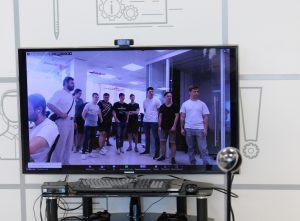Another important characteristic of an AFIS is its operating speed – the number of comparisons per unit of time. With the same reliability and selectivity measures, a system with low operating speed is more expensive in use – it requires more computers, more powerful equipment, and the costs of its installation and maintenance increase too.
Since the above-described parameters are the core indicators of AFIS search capabilities, they are also used when comparing the effectiveness of various systems.
It is important to note that the indicators of reliability and accuracy are not constant values for the same AFIS, since, as can be seen from their definitions, they are calculated based on the results of searches on a specific array of tenprint cards and latents. Not every system that shows high search characteristics on test or limited-size arrays is able to confirm these results when working with real fingerprint databases containing hundreds of thousands, much less millions and tens of millions of tenprint cards and hundreds of thousands of latents. While for effective actual operation of the system, the stability of values of its search characteristics on databases of any volume and resistance to distortions of an objective (differences in the qualitative composition of dactyloscopic arrays) and subjective (human factor) nature are important.
Effective AFIS is a reliable system with high selectivity of search, showing stable and invariable results on databases of any size and quality, producing short candidate lists with a true candidate within a top position, requiring from experts minimum time to verify them and make a final conclusion.
In the practice of our company, there are facts of replacing AFISs of other manufacturers, which were used by investigation departments in the Russian Ministry of the Interior and the police of other countries, with PAPILLON AFIS. During such replacements, in some cases, arrays of tenprints and latents were completely re-checked for mating prints. All tenprint cards and latents available in databases of predecessors were again converted from paper slips but into the format of PAPILLON AFIS databases, which made such re-checks analogous to «full-scale» comparative tests. A lot of previously unsolved latent prints were additionally identified with tenprints existing in the replaced AFISs, but missed. Analysis of the results showed that the reliability of each of the replaced AFISs was no more than 55-70% of PAPILLON AFIS reliability, although some of those replaced systems previously competed with PAPILLON in test trials and showed comparable results.
Stability and invariability of AFIS search characteristics depend on a number of interrelated factors, the most important of which are:
- the used method of mathematical description and comparison of ridge patterns
- perfection of ridge pattern recognition and coding algorithms
- automation level of data entry procedure
- ability of the system to work with dactyloscopic images of various quality
Let’s briefly focus on each of these factors:
— The method of mathematical description of ridge patterns and the comparison algorithm determined by it are the basis on which the reliability and accuracy of searches in AFIS depends. The following three groups of features have found practical application to describe the pattern:
- Integral structure of the pattern – a set of directions formed by ridge flows. Cores and deltas can be used as focal points describing the pattern.
- Local features of the papillary pattern – endings and bifurcations of ridge lines, so-called minutiae. Their location and, possibly, directional vectors (directions of ridge lines at the points of minutiae) are used.
- Ridge counts and ridgewise relations (topological characteristics of the pattern) describe mutual arrangement of neighboring features across and along the flow of ridge lines. These features are the most powerful criterion at comparing ridge patterns.
Different AFIS systems use either one of the listed groups of features or a combination thereof to describe ridge patterns. The more fully the ridge pattern is described, the higher is the search characteristics of the system, provided that its image recognition algorithms and automatic encoder recognize necessary information with the required precision. The methods fully describing ridge patterns impose the highest requirements to coding accuracy, and work effectively only if the sophisticated task of automatic recognition of ridge patterns, precise locating and coding minutiae is successfully solved.
PAPILLON AFIS uses the most exhaustive approach to describe and compare ridge patterns, based on all the three groups of features. Our patented topological method ensures a very high selectivity of search, surpassing the selectivity of systems describing only the integral structure and/or the location and direction of minutiae.
— Image recognition and encoding algorithms in AFIS must ensure high authenticity of data used by the system to create a mathematical search model of the ridge pattern. Of the two AFISs with similar methods describing the pattern, the system whose recognition algorithms and automatic encoder do their job better will have higher search characteristics.
The quality of the image processing algorithms implemented in the system can be indirectly judged by the degree of operator’s participation in the process of entering dactyloscopic information into the AFIS. The high level of automation means that the system is able to independently and with the required precision extract data it needs to describe the pattern and conduct searches.
For example, PAPILLON AFIS automatically encodes all impressions on tenprint cards, including palm prints, and at the same time provides 100% reliability of tenprint-to-tenprint search. The coding of latents is interactive, though the degree of operator’s intervention depends on the quality of a latent. For latent prints of good and medium quality, the automatic coding operation guarantees correct location of 80% of minutiae.
— In a high-quality AFIS, the high level of automation of image processing at tenprint and latent entry minimizes the risks of subjective interpretation of entered information, ensuring the immunity of search characteristics of the system to human factor. The use of such an AFIS is cheaper due to lower labor costs and, accordingly, higher system throughput, as well as due to lower demands to operators’ qualification.
— The quality of tenprint cards and latents entered into the AFIS has a direct impact on search results. The higher the quality of dactyloscopic images, the more informative they are, the less time it takes to process them, and the more accurately the system matcher works, providing high selectivity of searches and reducing the length of candidate lists. In actual practice, a significant part of existent arrays of paper tenprint slips and the overwhelming majority of latents lifted on crime scenes do not fall into the category of high-quality source information. It is possible to exclude the influence of this factor on the effectiveness of AFIS through preliminary selection of tenprint cards and latents and elimination of low-quality images from submission. But such an approach is tantamount to a loss in reliability of the system by the percent of «rejected» objects and is unacceptable, of course. The system should be able to work with tangled and low-informative objects, including images captured on an unknown scale, to compensate for any geometric and qualitative distortions of prints – age-related, postmortem, resulting from any injury or disease.
What indicates that the system is able to work effectively with images of heterogeneous quality? These are the following properties:
- no requirements for pre-selection of tenprints and latents in terms of quality (compared to manual technology)
- no requirements to enter dactyloscopic images in a single scale
- ability to enter impressions with a small (<15) number of minutiae (e.g. low-quality latents with a small fragment of a ridge pattern)
- diverse functionalities to facilitate the work with tangled objects, such as:
- replacement of low-quality rolled fingerprints with plain impressions available on a tenprint or ability to search by plain impressions
- tools for enhancing the view of images
- tools and filters for improving image quality, separating overlapping latents, removing the texture of the substrate, etc.
Also, the leading AFIS manufacturers offer solutions to improve the quality of generated fingerprint arrays.
In PAPILLON, such solutions are:
- LIVE SCANNER electronic fingerprinting technology and a family of live-scan devices that ensure the high quality of tenprints and their automatic export to AFIS databases
- a video input system with a high-resolution camera for inputting images of latent prints into the AFIS, as well as FOSCO and ExpertLab for high-quality evidential photography in various light modes
- RASTR system with powerful processing capabilities to improve the quality of dactyloscopic images
Some more indicators determining the AFIS effectiveness are worth noting especially:
- Ability of the system to work with palm prints. Crime scene technicians know that 15-30% of all evidential prints lifted on crime scenes are those of palms. Operational experience of Russian law enforcers, who moved from the «finger» version of PAPILLON AFIS to its «palm» one, showed that the system efficiency increased by 20-35%.
- Equal reliability and accuracy of the latent-to-tenprint and tenprint-to-latent searches. The problem of low accuracy of tenprint-to-latent searches is relevant for most forensic AFISs. This problem is particularly apparent on large databases, when candidate lists have unacceptable length, the true candidate takes an unpredictable position in the list, verification of candidates requires a good deal of time and, as a result, operational responsiveness in solving crimes is very low.
- Ability of the system to automatically process requests for express identification by fingerprints in real time, coming from remote AFIS sites and mobile devices (In PAPILLON AFIS, this technology is called Express ID Checks).
- System interoperability, compliance with current international standards in the field of fingerprint identification, identity verification and data transmission.
To summarize, here is a list of criteria that are significant for tentative comparative assessment of different AFIS systems:
- Exhaustiveness of the mathematical method of describing ridge patterns
- Accuracy of the automatic encoder, which can be indirectly assessed by the degree of operator’s participation in the process of encoding tenprints and latents
- Operating speed (number of tenprint-to-tenprint, tenprint-to-latent, latent-to-tenprint and latent-to-latent comparisons per second)
- Size of candidate lists generated
- Position of true candidates in candidate lists
- Equal efficiency of the latent-to-tenprint and tenprint-to-latent searches
- Ability to work with real arrays of tenprint cards and latents without pre-selecting them by quality
- Ability to work with different-scale and distorted images
- Ability to work with latent and known palm prints
- Availability of software and technological solutions for high-quality input of information into the AFIS (electronic fingerprinting, digital input)
- Possibility of remote automatic express identification of an individual against the AFIS database in real time
- System interoperability, compliance with current standards
- Distribution and the scale of projects implemented with the use of the AFIS of interest (database size)
An objective and official comparative assessment of automated fingerprint identification systems can be obtained only as a result of full-scale comparative tests of two or more AFISs on real arrays of tenprint cards and latents according to carefully elaborated testing methods that provide absolutely equal conditions for all tested systems.
Related Posts

03.05.2023
PAPILLON develops cooperation with the Turkmen Interior Ministry
23.05.2023
PAPILLON enters the Asian IT market
14.06.2023
3DiVi has launched an online course on Computer Vision and Machine Learning
20.03.2023
NN has been implemented in PAPILLON-9 AFIS
03.03.2023
3DiVi teaches NN to monitor and manage order in cities
20.01.2023
3DIVI teaches students how to launch international IT projects